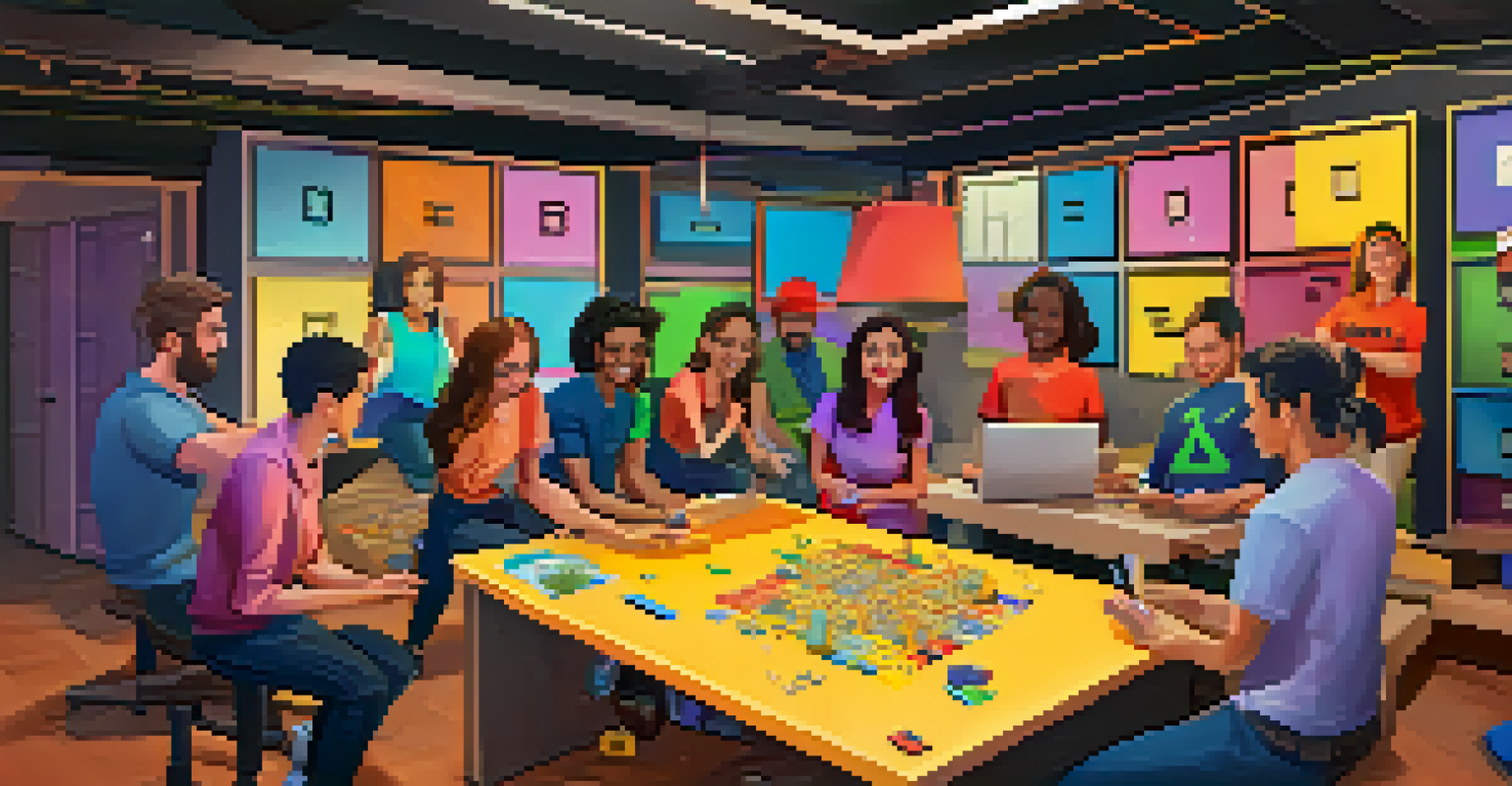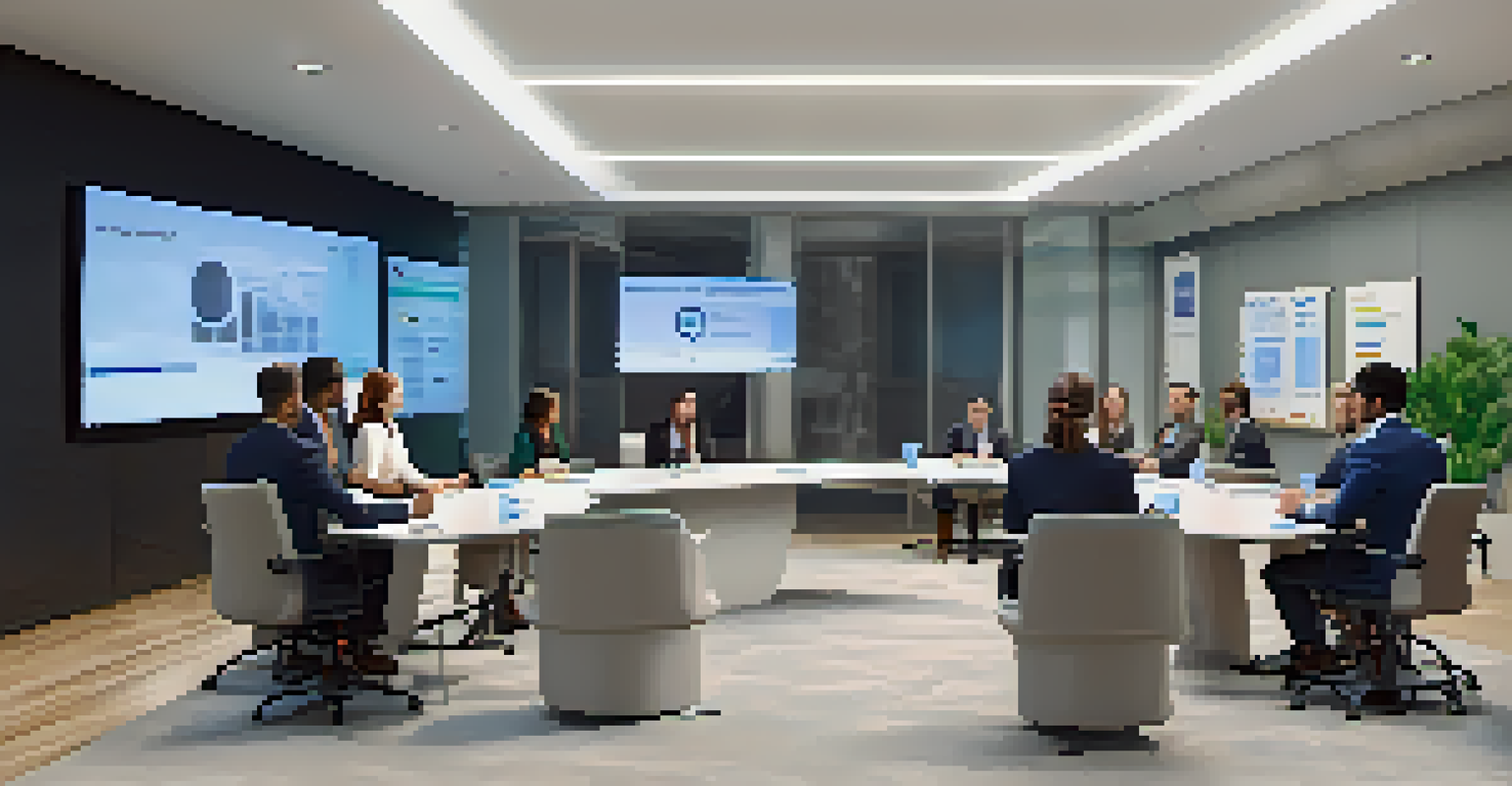Exploring Virtual Reality's Role in Remote Team Collaboration

Understanding Virtual Reality in the Workplace
Virtual Reality (VR) is not just for gaming; it’s making waves in the workplace too. By immersing users in a digital environment, VR enables teams to interact as if they were in the same room. This technology can create a sense of presence that traditional video calls simply can't match. For remote teams, this means enhanced communication and a more engaging way to brainstorm ideas.
Virtual reality is not just a tool; it's a new medium for collaboration and innovation in the workplace.
Imagine a team of designers scattered across different cities. With VR, they can gather in a virtual space, sharing their screens and ideas seamlessly. It’s like having a digital conference room where everyone can collaborate in real-time. This immersive experience fosters creativity and collaboration, making it easier to visualize concepts together.
Moreover, VR can reduce feelings of isolation that often accompany remote work. By creating a sense of community in a virtual space, team members can interact more naturally. This leads to stronger relationships and a more cohesive team dynamic, which is essential for successful collaboration.
Enhancing Communication through Immersive Experiences
One of the biggest challenges in remote teamwork is maintaining clear communication. Misunderstandings can arise easily when relying solely on text or video calls. VR addresses this issue by allowing team members to express themselves through body language and facial expressions, which are often lost in traditional communication methods.

For instance, during a brainstorming session in VR, participants can see each other's reactions in real-time. This visual feedback enhances discussions, making it easier to gauge whether an idea resonates with the group. The immersive nature of VR encourages more open dialogue and collaboration, which can lead to better decision-making.
VR Enhances Team Collaboration
Virtual Reality creates immersive environments that allow remote teams to communicate and collaborate more effectively.
Additionally, VR can facilitate more engaging presentations. Team members can present their ideas in a dynamic way, using 3D models or interactive graphics. This not only captures attention but also aids in understanding complex concepts, ultimately improving team alignment on projects.
Building Team Cohesion with Virtual Reality
Team cohesion is crucial for productivity, and VR offers unique opportunities to strengthen bonds among remote workers. Virtual reality can host team-building activities, where employees engage in fun challenges or simulations, fostering camaraderie. These shared experiences create lasting memories and connections that enhance teamwork.
The future of work is not about where you are but how you collaborate and connect with others.
Consider a virtual escape room where team members must work together to solve puzzles. Such activities not only break the ice but also encourage collaboration, problem-solving, and trust. When teams feel connected, they are more likely to communicate effectively and support one another in their tasks.
Moreover, VR can help in onboarding new employees by immersing them in the company culture. New hires can explore a virtual office space, meet team members, and participate in training sessions. This approach provides a welcoming introduction to the team, making the transition smoother and more enjoyable.
Overcoming Distance with Virtual Collaboration Tools
Distance can feel daunting in remote work, but VR tools help bridge that gap. Tools like VR chat rooms and virtual whiteboards allow teams to collaborate in real-time, regardless of their physical location. These platforms mimic in-person interactions, creating a more effective collaborative environment.
For example, using a virtual whiteboard, team members can brainstorm and visualize their ideas together. This interactive approach encourages participation and keeps everyone engaged in the discussion. It’s not just about sharing screens; it’s about creating a shared space where everyone feels involved.
Boosting Team Cohesion with VR
VR facilitates team-building activities that strengthen relationships and foster a sense of community among remote workers.
Additionally, these tools can be integrated with existing project management software, streamlining workflows. Teams can seamlessly transition between planning sessions and collaborative activities, improving efficiency and productivity.
Training and Development in a Virtual World
VR is revolutionizing training and development for remote teams. By creating realistic scenarios, employees can practice skills in a safe environment. This hands-on approach ensures that team members are better prepared for real-world challenges, ultimately enhancing their performance.
Imagine a sales team practicing their pitch in a virtual setting, interacting with simulated clients. This immersive training can boost confidence and improve communication skills, leading to better sales performance. VR training modules can be tailored to specific roles, ensuring that each team member receives relevant and impactful training.
Moreover, VR offers opportunities for continuous learning. Teams can attend virtual workshops or conferences, gaining insights from industry experts without the need for travel. This flexibility supports ongoing professional development and keeps employees engaged in their learning journey.
Measuring Success in Virtual Team Collaboration
As with any new technology, measuring the success of VR in remote collaboration is essential. Key performance indicators (KPIs) such as engagement levels, project completion times, and team satisfaction surveys can provide valuable insights. These metrics help organizations understand the impact of VR on their teams.
For instance, tracking project timelines before and after implementing VR tools can reveal significant improvements in efficiency. Additionally, employee feedback on their experiences in virtual meetings can highlight areas for enhancement. This data-driven approach ensures that teams can continuously refine their collaboration strategies.
Effective Training in a Virtual Space
VR revolutionizes training by providing realistic scenarios that enhance skill development and employee preparedness.
Furthermore, case studies from companies that have successfully integrated VR can provide benchmarks for others. Learning from these examples can guide organizations in their VR journey, helping them adopt best practices and maximize the benefits of virtual collaboration.
The Future of Remote Work with Virtual Reality
As technology continues to evolve, the role of VR in remote work is poised to expand further. With advancements in hardware and software, virtual collaboration will become even more accessible and realistic. This shift could redefine how teams work together, making remote collaboration more engaging than ever.
Imagine a future where virtual offices become the norm, allowing teams to work side by side in a digital environment. Such developments could eliminate the need for physical office spaces, leading to cost savings and increased flexibility for businesses. The potential for creativity and innovation in a virtual workspace is limitless.

However, as we embrace this technology, it's essential to maintain a human touch. Balancing the benefits of VR with personal connections will be key to fostering a thriving remote work culture. By integrating VR thoughtfully, organizations can create a collaborative environment that supports both productivity and employee well-being.